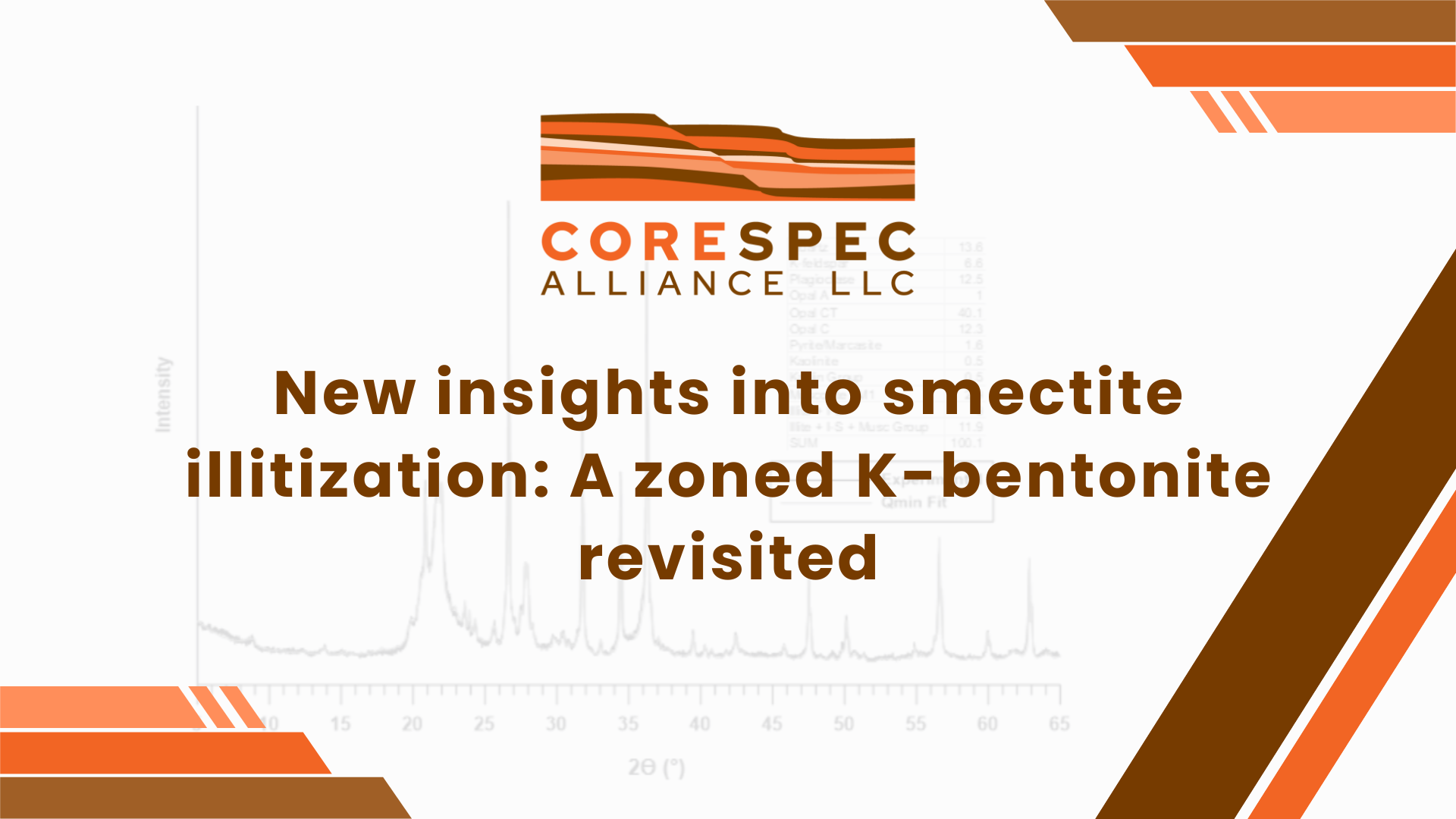
06 Aug New insights into smectite illitization: A zoned K-bentonite revisited
New insights into smectite illitization: A zoned K-bentonite revisited
Douglas K. Mccarty, 1,* Boris a. saKharov, 2 anD victor a. Drits2
1Chevron ETC, 3901 Briarpark, Houston, Texas 77063, U.S.A. 2Geological Institute of the Russian Academy of Science, Pyzhevsky per. D.7, 119017 Moscow, Russia
Abstract -The illitization reaction in a thick K-bentonite bed located in upper Cretaceous marine shale in the
Montana disturbed belt was studied by X-ray diffraction, chemical analysis, and thermal gravimetric
analysis. Modeling of the experimental XRD patterns from oriented clay specimens in air-dried and
glycolated states shows that at each sample location in the bentonite bed a mixture of R0 illite-smectite
(I-S) and R1 I-S coexist. Each of these phases in all samples consists of the same or similar content
of illite and expandable layers independent on location in the bed. In particular, the illite content in
the R0 I-S and the R1 I-S from the <0.5 µm fractions is equal to 30 and 62%, respectively. The main
difference between the samples at different locations is the different weight concentrations of the
coexisting I-S phases. The R1 I-S content decreases progressively from the lower and upper contacts
of the bed to its center. The reverse trend was observed for the R0 I-S. The layer unit-cell parameter b
increases from samples located near the middle of the bed toward samples near the bed margins. The
DTG patterns of the samples contain two endothermic maxima at about 640 and 470 °C, corresponding
to cis-vacant (cv) illite and trans-vacant (tv) smectite layers coexisting in the R1 I-S and R0 I-S.
Analysis of the crystal-chemical features of the R1 I-S and R0 I-S shows that, in the middle of
the bed, both phases are characterized by the lowest octahedral Mg and the highest tetrahedral Al
contents. In the structural formula of the R1 I-S, the tetrahedral Al content is significantly higher than
the (K+Na) content independent of sample location. In contrast, tetrahedral Al in the R0 I-S located
near the bed boundaries is lower compared with (K+Na) content.
To account for the crystal-chemical features of the coexisting I-S, a first assumption is that the
initial volcanic ash was altered into tv smectite having a homogeneous Al-rich composition throughout the bed. Second, along with K, the active role in illitization was controlled by Mg. Mineralogical
zonation of the K-bentonite is explained by the progressive migration of K from the margins toward
the bed center with the associated decrease of K cations in the pore fluids. However, the decrease in
K concentration was accompanied by a successive increase in R0 I-S content, but not a progressive
decrease in illite layer content in a single I-S phase. The main role of Mg was to redistribute octahedral
and tetrahedral Al in the 2:1 layers of the R0 I-S and R1 I-S in such a way that the amount of Al in
the tetrahedral sheets increased at the expense of the substitution of Mg for Al in the octahedral sheet
of the 2:1 layers in the initial smectite.
These results demonstrate a new insight into mineralogical sequences of intermediate members of
smectite illitization. Instead of a statistically homogeneous and continuous reaction associated with the
increase of illite layers in I-S and the simultaneous increase of order of the layer stacking sequence,
the illitization reaction in the thick K-bentonite consists of the formation of a physical mixture of
two I-S having a contrasting content of layer types and their distribution. Factors responsible for the
formation of the coexisting R0 I-S and R1 I-S are discussed.
Keywords: Illitization, K-bentonite, multispecimen fitting, X-ray diffraction, smectite, cis-vacant,
trans-vacant, TGA DTG


No Comments